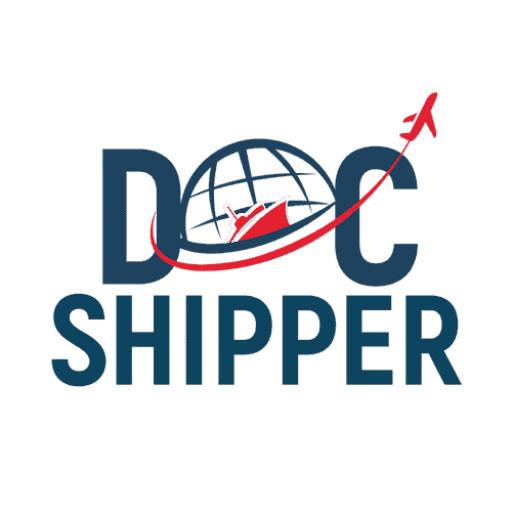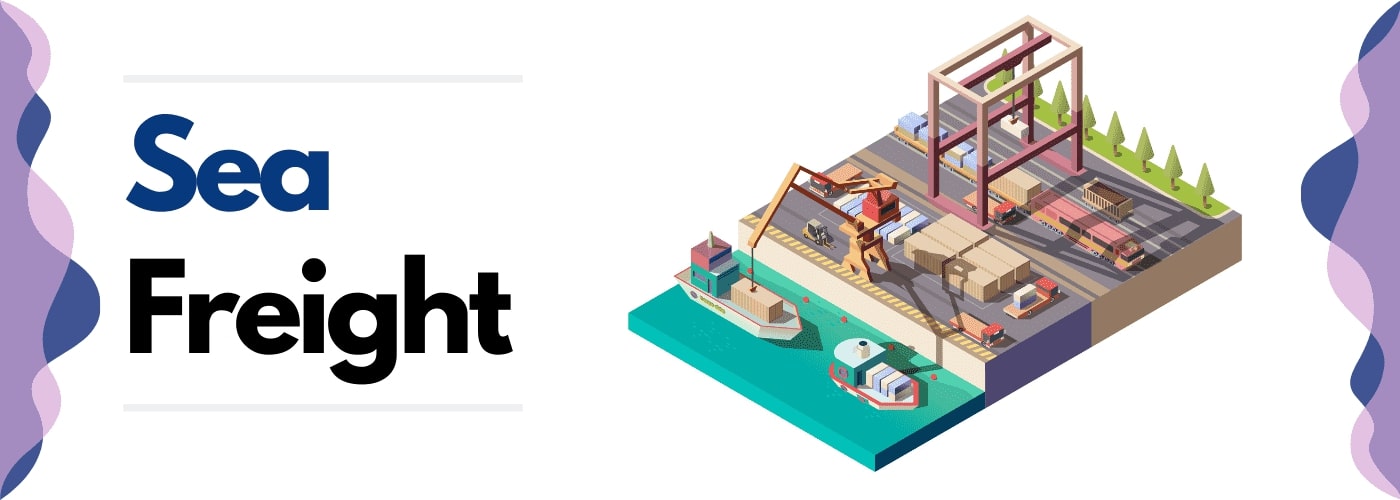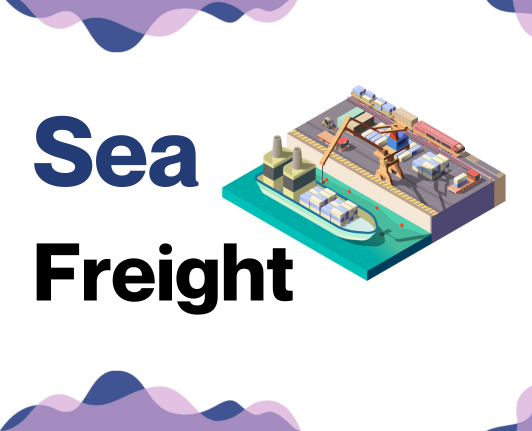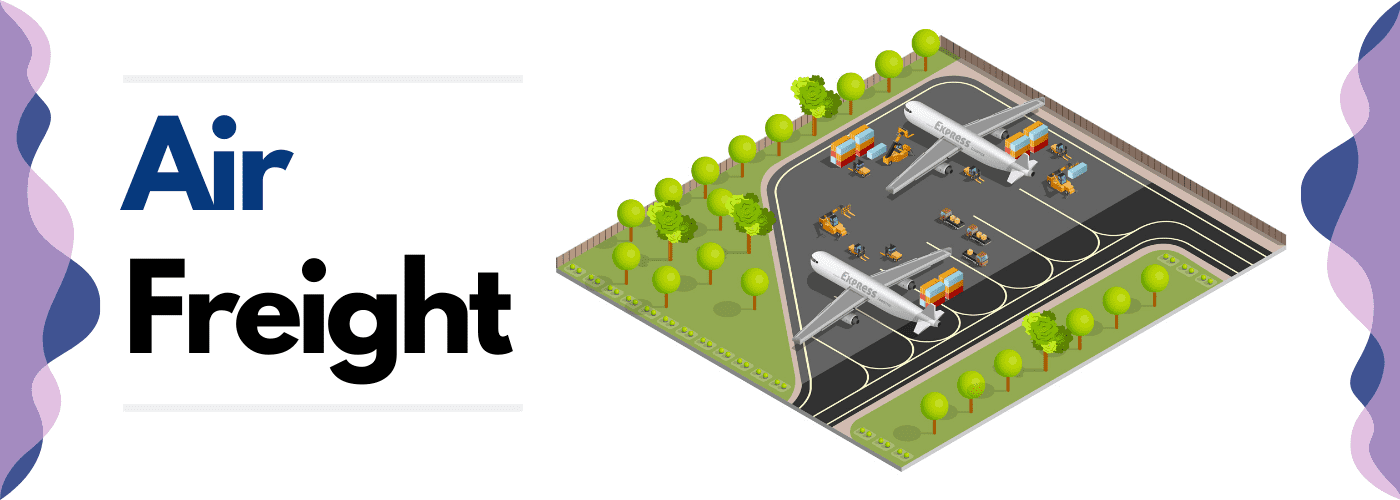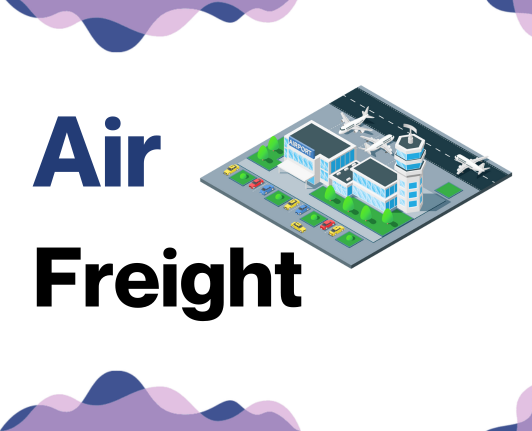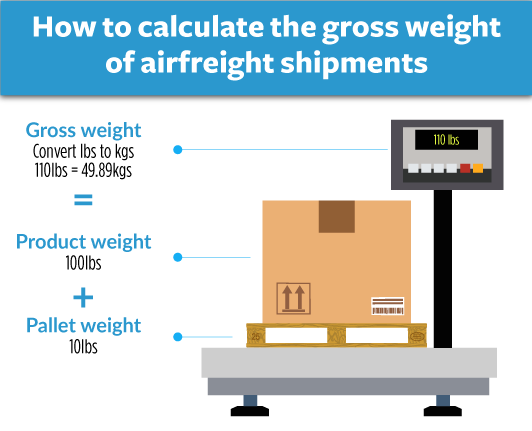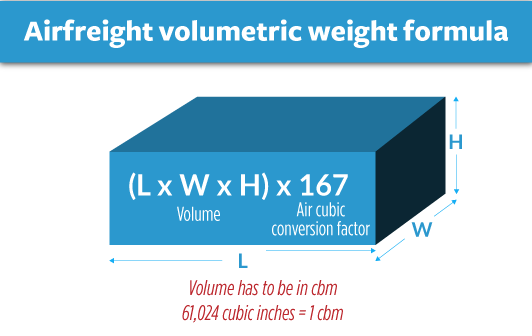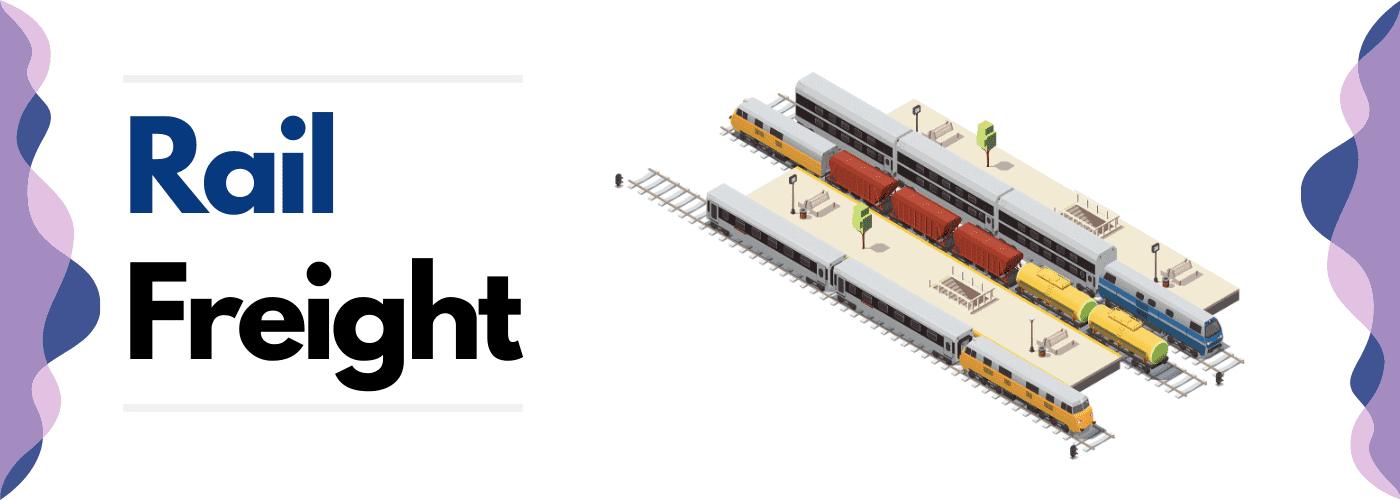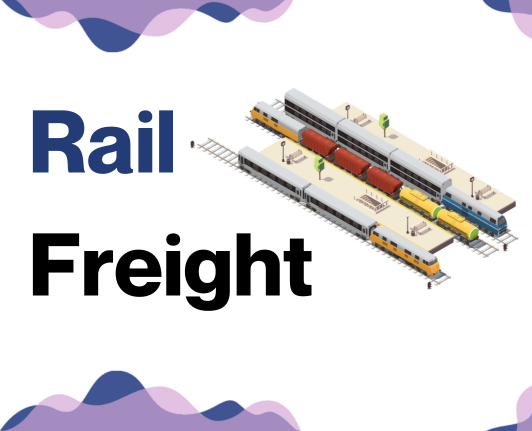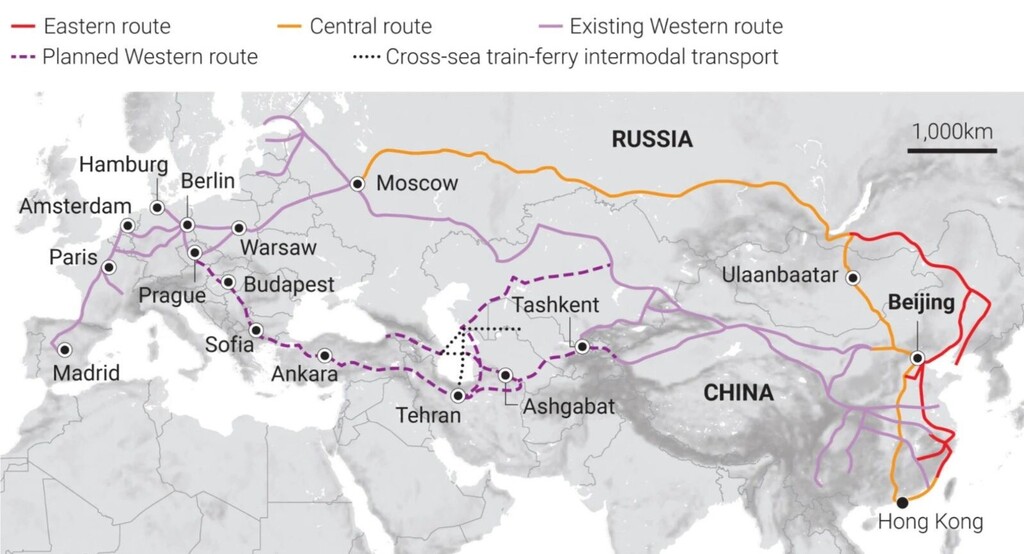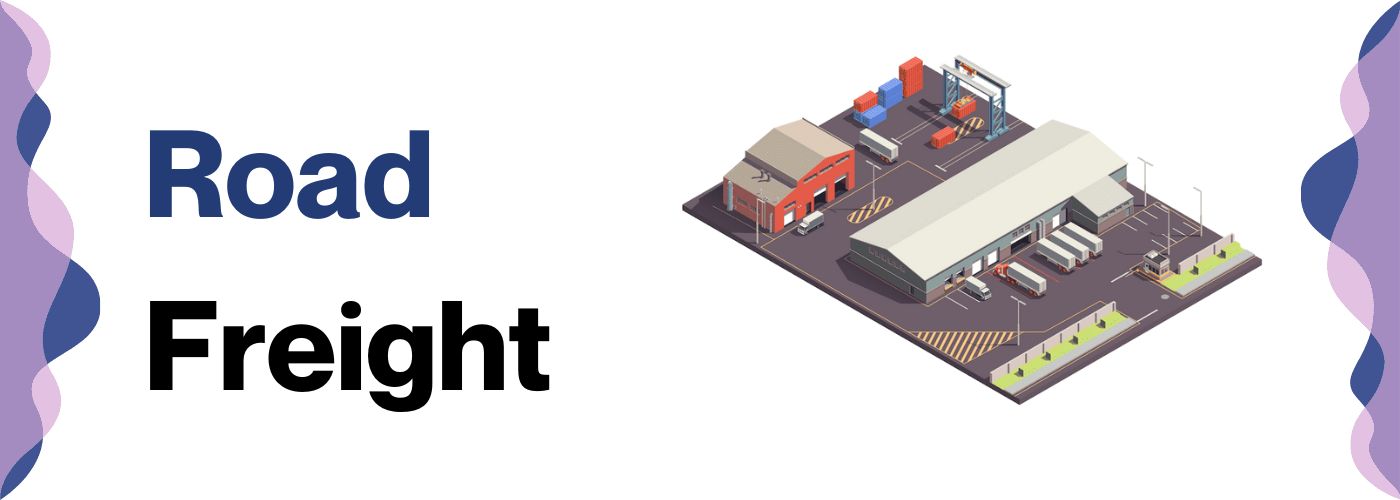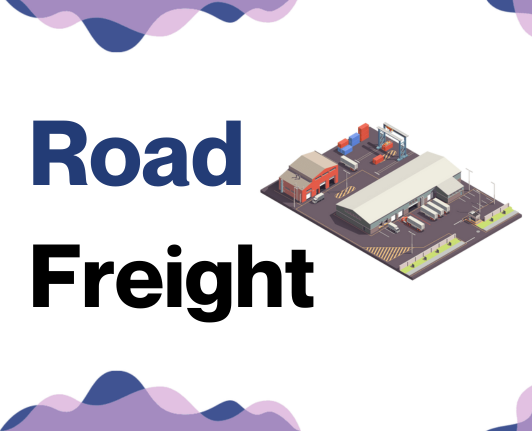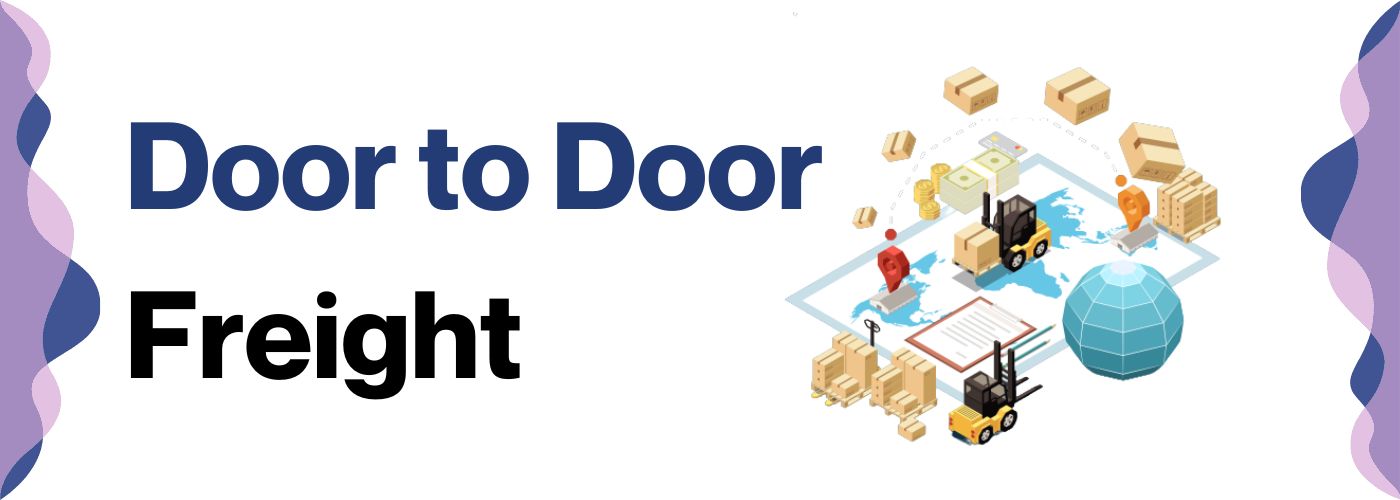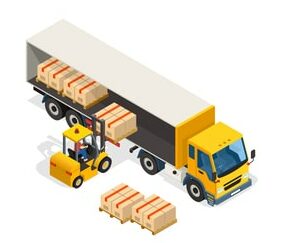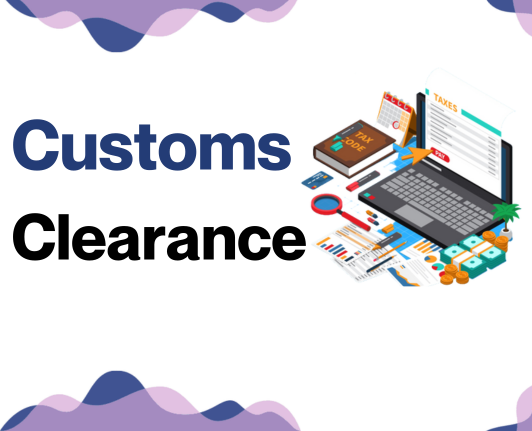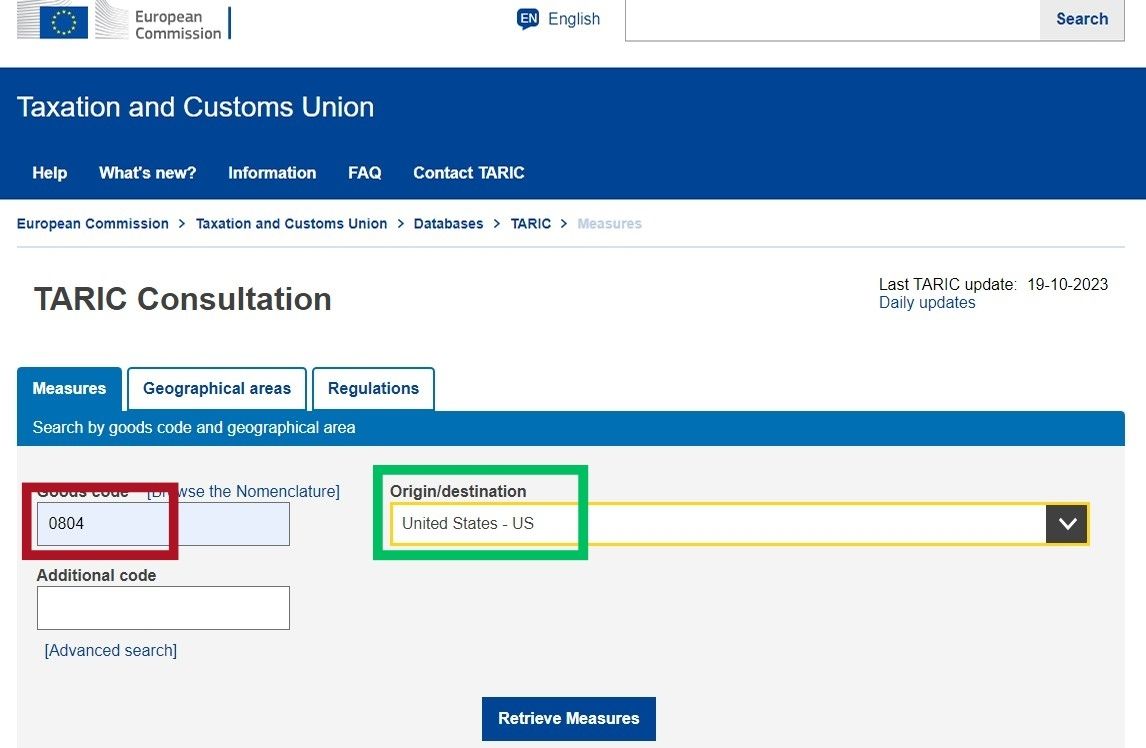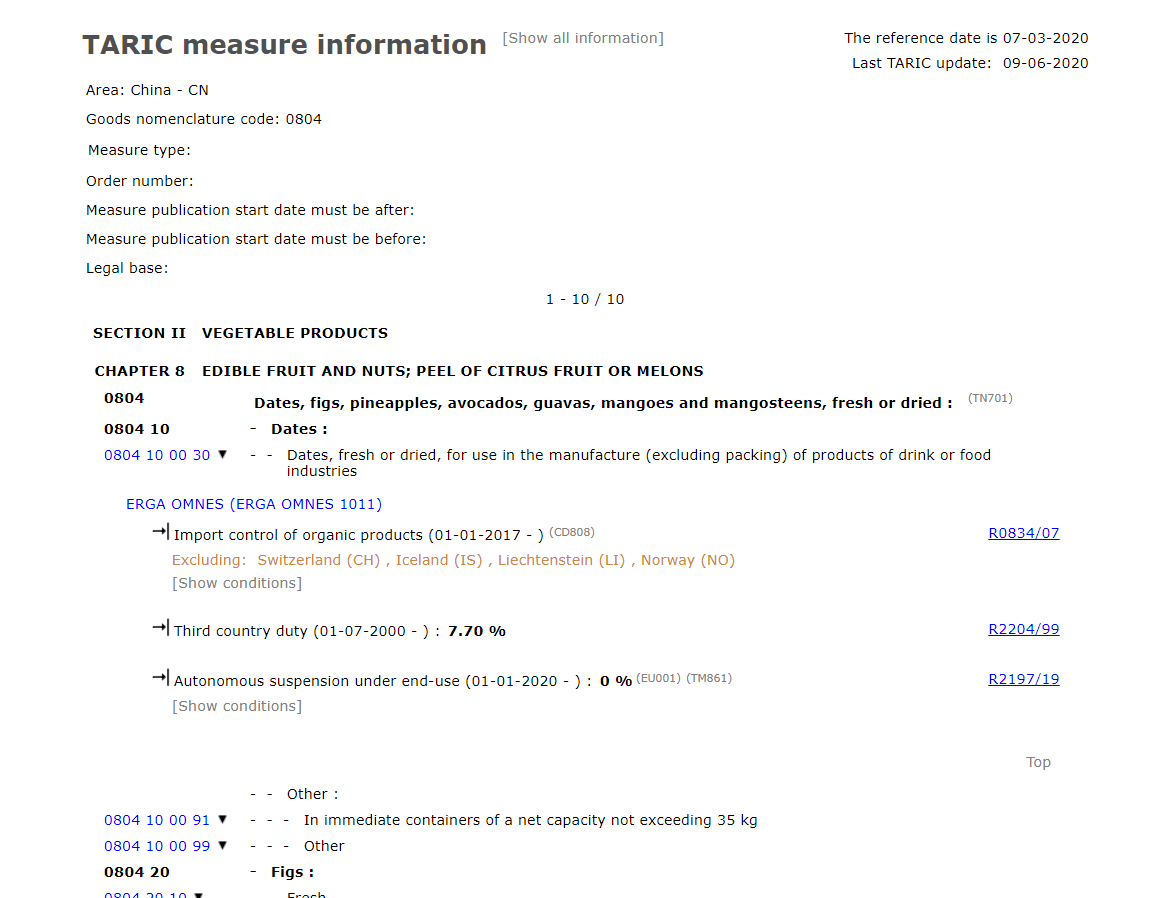Shipping goods between China and Poland doesn't have to be as puzzling as trying to eat soup with a chopstick! As an international business, the challenge often lies not in demand but in understanding the complex maze of freight rates, transit times, and especially, customs regulations. This guide will provide an in-depth look at the different freight options available, from air to sea and everything in between. It will then walk you through the intricacies of the customs clearance process, decoding confusing terms related to duties, and taxes. You'll also find insightful advice to navigate this logistical labyrinth, designed specifically for businesses. If the process still feels overwhelming, let DocShipper handle it for you! As a leading international freight forwarder, we ensure every detail is meticulously managed, turning your shipping challenges into success stories. Trust us to be your guiding light in the often foggy realm of international freight.
Which are the different modes of transportation between China and Poland?
Deciding on the most sensible method to move your goods from China to Poland isn’t just a hop, skip, and a jump. With over 5,000 miles and multiple borders between them, the choice is a puzzle. Piece it together by weighing each option's pros and cons. Would your freight feel at home in the belly of a plane, skimming the clouds? Or does the steady rhythm of a sea voyage or the constant hum of truck tires across highways make more sense? Your choice should marry your goods’ needs and the distance’s demands. Ready to crack this code? Let's dive in.
How can DocShipper help?
Transporting goods from China to Poland? DocShipper is the key to your success. With a wide range of services, including arranging transportation, handling customs clearance, and managing administrative paperwork, we allow your business to focus on what it does best. Got a question? Our expert consultants are a call away. Request a free estimate and get a response in less than 24 hours.
DocShipper Tip: Sea freight might be the best solution for you if:
- You are shipping large volumes or bulky items, as sea freight offers the most space at a cost-effective rate.
- Your cargo doesn't have an urgent deadline, as sea freight typically has longer transit times compared to air or rail.
- Your shipping routes are between major ports, allowing you to leverage the extensive global network of sea shipping lanes.
Sea freight between China and Poland
When it comes to international trade, the sea route between China and Poland holds a significant role. Picture the bustling cargo ports of Shanghai, Ningbo-Zhoushan, and Shenzhen, filled with containers ready to embark on a journey to Polish industrial hubs like Gdansk or Gdynia. This water-bound ballet of goods exchange underscores the vital trade bond between these two economic powerhouses.
Ocean shipping may be the tortoise in the race against air and rail, but for high-volume goods, it wins thanks to its cost-effectiveness. Imagine trying to stuff a melon into a lemon-sized jar. That's what cramming large-scale shipments via air or rail can feel like. Sea freight, spacious and lenient, is the melon-sized jar for those hefty loads.
However, it's not always smooth sailing. Many businesses find themselves lost at sea while negotiating the tricky currents of shipping between China and Poland. Common mistakes can dock your business in unnecessary delays and costs. But fear not, in this guide, we'll dive into the best practices to safely navigate these waters that can make your voyage far simpler.
Main shipping ports in China
Port of Shanghai
Location and Volume: The Port of Shanghai, situated on China's eastern shore near Shanghai, achieved exceptional results in the first four months of 2023. Handling an impressive 15 million TEUs of container freight, the port witnessed a substantial 30.2% rise year over year, emphasizing its pivotal role in global marine trade. This growth, amid China's post-COVID-19 economic rebound, underscores the country's resilience and the port's steadfast commitment to facilitating international trade seamlessly.
Key Trading Partners and Strategic Importance: Its key trading partners include the United States, European Union, and countries throughout Asia. As the world's busiest container port since 2010, its strategic importance to both international and intra-Asia trade cannot be overstated.
Context for Businesses: If you're seeking to penetrate the Asian markets or expand your trade with North America and Europe, the Port of Shanghai is likely a crucial part of your logistics strategy, thanks to its well-established trading networks, high shipping volumes, and advanced infrastructure.
Port of Shenzhen
Location and Volume: Shenzhen Port, situated in the Guangdong-Hong Kong-Macao Greater Bay Area, achieved a remarkable milestone in 2022 by handling 30.0356 million TEUs, marking a 4.39% year-over-year increase. Shenzhen's economic resiliency and strategic efforts have positioned it as a pivotal shipping hub, securing its rank as the fourth port globally to exceed 30 million TEUs. This success is attributed to innovative techniques, including the establishment of transshipment routes, utilization of sea-rail transit, and inauguration of international freight routes. With continued infrastructure developments and strategic initiatives, Shenzhen Port aims to boost throughput to 33 million TEUs by 2025, further solidifying its role in global marine trade.
Key Trading Partners and Strategic Importance: Shenzhen’s port interacts directly with many Southeast Asian countries along with North America and Europe. It hosts the Shenzhen Port International Container Terminal, a crucial link in China's Belt and Road Initiative.
Context for Businesses: For companies targeting trade growth in the thriving Guangdong province or looking to leverage the Belt and Road Initiative, the Port of Shenzhen presents significant logistical benefits with its modern infrastructure and strategic location.
Port of Ningbo-Zhoushan
Location and Volume: Ningbo-Zhoushan Port in China's Zhejiang province excelled in 2022, processing 33.35 million TEUs of container freight, a 7.3% rise year on year and securing the third rank among the world's busiest container ports. Furthermore, the port achieved a stunning 1.25 billion tons of overall cargo throughput, keeping it as the world's top port for the 14th consecutive year. Notably, the port's container sea-rail intermodal transport industry increased by more than 20%, reaching a volume of 1.45 million TEUs. The port continues to improve worldwide connectivity with an extensive network of over 300 shipping routes and the inclusion of 13 new international routes, including 120 "Belt and Road" lines. In 2022, the port took 18 initiatives to ensure smooth traffic and 46 effective activities to accelerate progress and improve operational efficiency.
Key Trading Partners and Strategic Importance: The port primarily trades with North America, Europe, and the Southeast Asian nations. It's known as the world's largest port in terms of cargo tonnage.
Context for Businesses: If your business focuses on commodities or volume-heavy trade, Ningbo-Zhoushan should be pivotal to your shipping strategy based on its impressive cargo capacity and prominent position in east China's transportation network.
Port of Guangzhou
Location and Volume: The Port of Guangzhou, situated in the heart of the Pearl River Delta, stands as the world's fifth busiest container port, handling 24.6 million TEUs in 2022. Serving as a vital trading hub connecting China with the global market, it plays a critical role in the global supply chain. With China's economy expanding and global trade recovering, the Port of Guangzhou is poised for future expansion.
Key Trading Partners and Strategic Importance: It shares robust trading relationships with regions in Asia, Australia, Europe, and North America. As South China's main hub port, it's critical to the regional logistics network.
Context for Businesses: If you aim to reach markets in southern China or countries in Asia-Pacific, then the Port of Guangzhou, with its extensive hinterland and seamless multimodal transport systems, may well be the cornerstone of your shipping plan.
Port of Qingdao
Location and Volume: Qingdao Port in Shandong experienced significant growth in 2022. It managed 26.82 million TEUs of containers, marking a 13.1% rise year over year. The port's total cargo volume surged by 10.3% to 627 million metric tons. With an income of 19.26 billion yuan ($2.8 billion), reflecting a 14.71% year-on-year increase, Qingdao Port's robust performance underscores its vital role in domestic and international maritime trade.
Key Trading Partners and Strategic Importance: It trades primarily with Asia, Europe, and the Americas and is one of the world's fastest-growing ports, emphasising its strategic importance.
Context for Businesses: For businesses with a fast-paced, wide-reaching logistics strategy spanning Asia, Europe, and the Americas, the rapidly growing Port of Qingdao offers a high-speed, efficient connection point.
Tianjin Port
Location and Volume: Based in Bohai Bay, Tianjin Port is northern China's primary maritime gateway and the largest port in this region. The Port is China's fourth largest port by throughput tonnage, handled over 21 million TEUs in 2022, with an average annual growth rate of 6.9 percent over the past five years. The port's container throughput is expected to reach 21.8 million TEUs in 2023.
Key Trading Partners and Strategic Importance: The port favours trade with North America, Europe, ASEAN, Northeast Asia, and Australia. It supports the Beijing-Tianjin-Hebei collaborative development plan, reinforcing its strategic clout.
Context for Businesses: If northern China, particularly the Beijing-Tianjin-Hebei region, is in your business sights, or if you trade with North American, European, or ASEAN countries, Tianjin Port will be a vital part of your supply chains thanks to its large volume and robust connections.
Main shipping ports in Poland
Port of Gdansk
Location and Volumes: Strategically positioned on the Baltic Sea in Gdansk, this port is essential for businesses considering trade within Northern Europe. In 2022, the port experienced remarkable growth with a 28.2% increase in cargo transshipment, totaling 68.2 million tons. Despite a 20% decrease in dry bulk cargoes, the port saw significant rises in coal processing (2.75 times to 13.2 million tons) and oil (34.9% to 25.5 million tons). Although container processing dipped slightly (2.2% to 2.07 thousand TEU), strategic investments, particularly in the Inner Port, played a key role. These efforts expanded berths and enhanced transshipment capabilities, solidifying the Port of Gdansk's position as a vital hub in Poland's maritime trade.
Key Trading Partners and Strategic Importance: The Gdansk port significantly contributes to Poland's economy due to its vast trading network that includes partners like Germany, Russia, Sweden, and the United Kingdom. It's an established gateway to the Southern Baltic Sea, bringing a strategic importance for businesses engaged in European trade.
Context for Businesses: If you're looking to expand in the European market specifically within Northern Europe, the Port of Gdansk may be an essential part of your logistics due to its capacity to handle high shipping volumes and its strategic location.
Port of Gdynia
Location and Volume: Located on the south coast of the Baltic Sea in the city of Gdynia, this port is vital for the distribution of goods in and out of Northern Europe, with an impressive shipping volume of over 21 million tonnes per year.
Key Trading Partners and Strategic Importance: The Gdynia port often sees traffic from partners like Denmark, Sweden, Canada, and the United States. Serving as the primary seaport for Warsaw, it's a crucial hub for businesses looking to connect with the Central Poland market.
Context for Businesses: If you're planning to ship goods to or from Central Poland, consider the Port of Gdynia for your sea freight needs given its proximity to Warsaw and established connections with key international trading partners.
Port of Szczecin
Location and Volume: Located by the Oder river, the Port of Szczecin is crucial for east-west trade across Central Europe, handling approximately 25 million tonnes of cargo each year.
Key Trading Partners and Strategic Importance: The main trading partners are Germany, the UK, and the Netherlands. Along with its strategic river location, this port is also an important railway junction, making it a multi-modal transport hub.
Context for Businesses: If your shipping strategy includes rail transport in addition to sea freight, the Port of Szczecin may be a viable choice with its integrated rail connections and location that naturally facilitates entry into key Central European markets.
Port of Świnoujście
Location and Volume: Located on the Baltic Sea near the German border, the Port of Świnoujście is a critical point of inbound and outbound cargo transportation, handling nearly 28 million tonnes of cargo each year. In 2022, the port transformed into an advanced and eco-friendly terminal. With over 70% of global transport being container cargo, this development responds to the rising demand in the Baltic Sea. Handling 3 million TEUs annually, Świnoujście's strategic location offers significant time and cost savings for ships, making it a crucial hub in the region's maritime network.
Key Trading Partners and Strategic Importance: With direct routes to Scandinavian countries and Germany, it’s a prominent port for businesses interested in Northern and Central European trade avenues.
Context for Businesses: If you’re eyeing to tap into the German or Scandinavian market, the Port of Świnoujście, with its strategic location and strong trade networks, could play a pivotal role in your shipping operations.
Port of Police
Location and Volume: Positioned about 60km from the Baltic Sea on the Oder River, the Port of Police handles upwards of 3 million tonnes of cargo annually. The port's TEU throughput, a key indicator of its productivity, showcased its significance in the global supply chain. As a vital hub for containerized cargo, the Port of Police contributed significantly to Poland's maritime trade and economic growth, emphasizing its essential role in the European shipping network.
Key Trading Partners and Strategic Importance: This port mainly serves phosphorus-related industries and heavily trades with countries like Iran, Morocco, and Russia.
Context for Businesses: For those in the agriculture industry or dealing with phosphorus-related products, the Port of Police could be a major logistics point in your shipping strategy.
Port of Władysławowo
Location and Volume: Situated in the northern tip of Poland on the Baltic Sea in Władysławowo, this comparatively smaller port deals with 200,000 tonnes of cargo annually. The Port of Władysławowo, nestled on the picturesque Polish coast, has emerged as a beacon of maritime activity. Handling a robust volume of containers, reaching an impressive 500,000 TEUs in 2022, the port stands as a testament to Poland's growing significance in international trade. Its strategic location along the Baltic Sea and continuous growth of 8.5% year-over-year highlight its pivotal role in shaping the region's economy.
Key Trading Partners and Strategic Importance: It primarily trades with Denmark, Finland, and Sweden. Though smaller in volume, the port is well-regarded for its efficient services and niche-focused operations.
Context for Businesses: If your business strategy involves smaller but more frequent shipments particularly to Scandinavian countries, Władysławowo's efficient, tailored services can help keep your logistics smooth and reliable.
Should I choose FCL or LCL when shipping between China and Poland?
When transporting goods from China to Poland, picking the right sea freight option—consolidation or a full container—can make all the difference. Your choice here directly sways cost implications, delivery timeframes, and the overall success of your shipment. In this section, we'll delve into the critical differences between Full Container Load (FCL) and Less-than Container Load (LCL), giving you a clear-eyed understanding to help craft a shipping decision tailored to your specific needs. The sea of international freight might seem vast and confusing, but with the right guide, you'll sail with confidence. Let's dive in.
LCL: Less than Container Load
Definition: Less than Container Load (LCL) is a shipping term referring to the transportation method where multiple consignments from different shippers are consolidated into one container. This method essentially allows shippers to split the cost of transportation.
When to Use: Shipping goods from China to Poland via LCL is particularly cost-effective for businesses with cargo volumes less than 13/14/15 CBM. This is because it provides the flexibility of shipping smaller quantities without the financial burden of booking an entire container.
Example: Consider an online retailer specialized in artisanal porcelain tableware based in Gdansk, Poland, sourcing their products from a small manufacturer in Chaozhou, China. Their orders vary, seldom exceeding 10 CBM. In such case, our LCL shipping service would allow them to ship product batches as and when available, maintaining steady inventory levels without excessively tying up capital.
Cost Implications: Unlike full-container-load (FCL), where the cost is flat despite the cargo size, LCL freight costs are calculated basis the volume of your cargo. This means, the less space your cargo occupies, the lower your shipping cost. However, additional fees such as the LCL shipment consolidation fee may apply. Ultimately, LCL provides cost-efficiency for smaller volumes, preventing businesses from paying for unused container space.
FCL: Full Container Load
Definition: FCL (Full Container Load) shipping means you're booking an entire container for your goods, whether it's a 20'ft or 40'ft container. It's your exclusive space for transport from China to Poland.
When to Use: FCL shipping is the inexpensive and safe choice when your cargo volume exceeds 13/14/15 CBM. As the fcl container is sealed at the origin and only opened upon reaching its destination, it ensures the safety and integrity of your goods.
Example: Let's say you're a furniture manufacturer. You have a large order to send from Shenzhen to Warsaw. The goods total around 18 CBM. Clearly, an FCL option ensures cost efficiency and safeguards your bulky, valuable stock during the entire journey.
Cost Implications: While FCL shipping comes with a higher initial price, the cost per unit is lower compared to LCL when handling larger cargo. You can obtain an FCL shipping quote specific to your needs from the shipping line or your freight forwarder. It's a wise long-term shipping strategy for businesses regularly dealing in high volumes of goods.
Unlock hassle-free shipping
Facing dilemma over consolidation or full container between China and Poland? Let DocShipper, your dedicated freight forwarder, guide you. Our ocean freight gurus simplify the complexities of cargo shipping - considering volume, weight, and urgency of your shipment. They map out the best, cost-effective solutions tailored to your business needs. Don't wrestle with shipping quandaries. Reach out to us now for your hassle-free freight journey and get a free estimation.
How long does sea freight take between China and Poland?
In general, sea freight between China and Poland usually takes around 31 days. Transit times can vary widely due to factors including the specific ports used, the weight of the shipment, and the nature of the goods being transported. To get a more precise estimate tailored to your unique needs, it's recommended to contact a freight forwarding service like DocShipper.
Following is a table detailing the average transit times in days between the main ports in China and Poland. Please remember, these are estimates and actual times may vary:
| China (Port) | Poland (Port) | Average Transit Time (Days) |
| Shanghai | Gdansk | 28-30 |
| Shenzhen | Gdansk | 30-32 |
| Ningbo-Zhoushan | Gdansk | 32-34 |
| Qingdao | Gdansk | 34-35 |
*These average transit times should be used as a general guide and may not reflect the actual shipping duration.
How much does it cost to ship a container between China and Poland?
Determining a precise shipping cost for a container from China to Poland isn't a straightforward task. Numerous variables, including the Point of Load, the nature of the goods, and the freight carrier, make the cost range exceedingly wide—imagine anything between a couple of hundred to a few thousand dollars per CBM! Add to that the complexity of monthly market fluctuations, and the rates become even more fluid. But don't fret! We are committed to giving you the best ocean freight rates that resonate with your individual needs. Our shipping specialists always quote on a case-by-case basis, diligently assessing every factor to ensure you get the optimal quote for your shipment. You're not alone in this journey; we're a team.
Special transportation services
Out of Gauge (OOG) Container
Definition: An OOG container, short for Out of Gauge, specializes in the transportation of oddly shaped or oversized cargo that doesn't fit within standard container dimensions. These containers are tailored to accommodate the shape and size of the cargo.
Suitable for: This mode of shipping is perfect for large, heavy, or irregularly shaped items that cannot fit or safely be transported in a conventional shipping container.
Examples: This includes cargo such as large machinery, industrial equipment, factory components, or even luxury yachts.
Why it might be the best choice for you: If your business involves shipping large, heavy, or irregularly shaped items from China to Poland, Out of Gauge cargo shipping could offer the custom solution you need.
Break Bulk
Definition: Break bulk refers to the handling of cargo items individually, as opposed to in containers.
Suitable for: It's most suitable for large, heavy items that cannot be containerized and are not time-sensitive.
Examples: Shipments of construction equipment, manufacturing materials, or items that are too large for containers.
Why it might be the best choice for you: If your cargo is difficult to containerize and there's flexibility in shipment arrival time, break bulk shipping may be your best fit.
Dry Bulk
Definition: Dry bulk is the transportation of homogenous, un-packaged, non-liquid goods in large quantities, loaded and unloaded in a loose cargo load format.
Suitable for: Commodity goods such as coal, grain, or minerals.
Examples: Businesses importing raw materials like metal ores, gravel or sand, may opt for dry bulk shipping.
Why it might be the best choice for you: If your business involves import/export of loose, raw materials, dry bulk transportation can be an effective and economic choice.
Roll-on/Roll-off (Ro-Ro)
Definition: Ro-Ro stands for Roll-on/Roll-off, a shipping method where vehicles and machinery are driven directly onto the ro-ro vessel.
Suitable for: Ro-Ro shipping is primarily used for the transportation of cars, trucks, semi-trailer trucks, trailers, and railroad cars.
Examples: For companies involved in transporting vehicles or heavy machinery that is mobile.
Why it might be the best choice for you: If your operation involves shipping wheeled cargo like automobiles or other mobile machinery, then the convenience of the Ro-Ro method is an attractive option.
Reefer Containers
Definition: Reefer containers are refrigerated shipping containers for goods requiring temperature-controlled conditions during transit.
Suitable for: Food items, pharmaceuticals, and other sensitive goods requiring consistent temperatures.
Examples: Fruit, meat, fish, dairy products, drugs, and biological samples are commonly transported in this manner.
Why it might be the best choice for you: If your business deals with perishables or temperature-sensitive goods, a reefer container maintains product integrity during the long journey from China to Poland.
To make the best decision for your unique requirements, experts at DocShipper can guide you through the process and answer any questions you have. Contact us today for a free shipping quote in less than 24h.
DocShipper Tip: Air freight might be the best solution for you if:
- You are in a hurry or have a strict deadline requirement, as air freight offers the fastest transit times.
- Your cargo is less than 2 CBM (Cubic Meter), making it more suitable for smaller shipments.
- Your shipment needs to reach a destination that is not easily accessible by sea or rail, allowing you to tap into the extensive network of global airports.
Air freight between China and Poland
Ready to skyrocket your business with rapid, reliable deliveries? Air freight between China and Poland could be your magic carpet. Perfect for transporting small, precious goods like high-tech electronics or designer apparel, it's like having a personal bodyguard for your cargo. But wait, nothing destroys a fairytale faster than a nasty surprise in costings. Many shippers stumble here, tripping over inaccurate weight formulae in estimations, or unwittingly ignoring cost-saving best practices. This can be like wearing a diamond tiara to a baseball game - flashy, but hardly practical. In this section, we'll light the path away from these common traps, helping you get the royal treatment without the royal expense.
Air Cargo vs Express Air Freight: How should I ship?
Struggling to decide whether to wing it with air cargo (freight loaded in a commercial flight) or to jet off with express air (rush delivery in a dedicated plane) for your goods' journey from China to Poland? Let's get into the nitty-gritty of these two high-flyers in the shipping world, tailoring toe-to-toe comparison against your unique business needs. Let's demystify these options, helping you to effectively propel your business to new heights.
Should I choose Air Cargo between China and Poland?
Air cargo unites China and Poland swiftly, with international airlines like China Southern, renowned for reliability, and LOT Polish, celebrated for cost-effectiveness. It's true, longer transit times can occur due to fixed schedules. However, if your shipments weigh more than 100/150 kg (220/330 lbs), air freight becomes notably attractive. Your budget might appreciate this method, striking a balance between speed and cost. So while sea freight horizons stretch ahead, air cargo offers a compelling alternative. Consider the needs of your specific business and the journey your cargo takes from factory to fulfillment. Striking the right balance should be your gaol.
Should I choose Express Air Freight between China and Poland?
If your shipment from China to Poland is lightweight or small, often under 1 CBM or 100/150 kg (220/330 lbs), consider opting for Express Air Freight. It's a specialized service operating dedicated cargo planes, exclusively for transporting goods - passenger-free. The key players, including FedEx, UPS , and DHL, guarantee swift and secure delivery. By choosing Express Air Freight, not only can you save on transport time but also reduce the risk of damage or loss to your precious cargo, ensuring your business sustainability. It’s an ideal choice for urgent or valuable shipments.
Main international airports in China
Beijing Capital International Airport
Cargo Volume: Handling 2 million tons of cargo annually.
Key Trading Partners: The United States, European Union, Japan, and South Korea.
Strategic Importance: As China's main international airport, it maintains extensive connections with regions worldwide, crucial for business shipments.
Notable Features: Houses a high-speed cargo handling system and is a hub for China's largest carriers.
For Your Business: Its comprehensive network and state-of-the-art mechanisms mean faster, more reliable shipping options.
Shanghai Pudong International Airport
Cargo Volume: One of the world's busiest, processing 3.6 million tons of cargo yearly.
Key Trading Partners: The United States, European Union, and Japan.
Strategic Importance: Half of China’s air cargo is flown in and out of Pudong, making it an indispensable shipment hub.
Notable Features: Includes a dedicated cargo terminal, facilitating efficient load maneuvers.
For Your Business: Choosing Pudong for transporting goods will ensure frequent flight options and seamless cargo handling.
Guangzhou Baiyun International Airport
Cargo Volume: Handles over 1.9 million tons of cargo annually.
Key Trading Partners: Southeast Asia, Europe, North America, and Australia.
Strategic Importance: Situated in Guangdong province, China's manufacturing heartland, this airport plays a pivotal role in the country's export trade.
Notable Features: China Southern's global cargo hub is based here.
For Your Business: Essential for businesses with considerable manufacturing and shipping operations due to its proximity to numerous factories.
Chengdu Shuangliu International Airport
Cargo Volume: Transports around 700,000 tons of cargo yearly.
Key Trading Partners: Europe, North America, and Asia.
Strategic Importance: Being in Western China, it serves as a significant transportation hub for the region.
Notable Features: It’s a main cargo hub for Sichuan Airlines.
For Your Business: Ideal for businesses looking for trade opportunities in Western China and beyond, given its strategic location.
Shenzhen Bao’an International Airport
Cargo Volume: Manages over 1 million tons of cargo annually.
Key Trading Partners: Southeast Asia, Europe, and North America.
Strategic Importance: Located in Shenzhen, a vital link in the Pearl River Delta Economic Zone.
Notable Features: It recently expanded to include a new terminal and enhanced air cargo facilities.
For Your Business: If your operations involve high tech industries, choosing Shenzhen Bao'an will allow access to one of the world’s biggest tech manufacturing hubs.
Main international airports in Poland
Warsaw Chopin Airport
Cargo Volume: Warsaw's Chopin Airport moves approximately 100,000 metric tons of cargo per year, making it one of Poland's busiest cargo hubs.
Key Trading Partners: Germany, the United Kingdom, and the United States are among its key trading partners.
Strategic Importance: The airport's central location in Europe positions it as a rising gateway for Eastern European trade.
Notable Features: Available services include round-the-clock customs services, dedicated cargo terminals, and easy access to major highways and suburban railway lines.
For Your Business: Its broad network of destinations and the facility to handle both large and small freight make it a valuable node in your European supply chain.
Gdansk Lech Walesa Airport
Cargo Volume: Gdansk Lech Walesa Airport handles around 12,000 metric tons of freight per year.
Key Trading Partners: Norway, Denmark, and Germany are among the key trading partners.
Strategic Importance: The airport serves the Pomeranian region and acts as a key player in Baltic Sea trade.
Notable Features: The airport includes a dedicated cargo terminal and excellent multimodal transport links, including direct motorway access.
For Your Business: Its role in the Baltic Sea trade may be especially beneficial if your business operates within this area.
John Paul II Kraków-Balice International Airport
Cargo Volume: Handling nearly 10,000 metric tons of cargo annually.
Key Trading Partners: Partners include Germany, Italy, and France.
Strategic Importance: The airport is a key node in Southern Poland, serving Krakow and surrounding regions.
Notable Features: The airport has a dedicated cargo terminal and convenient rail and road connections to main commercial hubs.
For Your Business: If your business targets Southern Poland or relies on timely delivery to this region, Kraków-Balice International could be an essential part of your logistics plan.
Katowice Airport
Cargo Volume: The airport processes over 20,000 tonnes of cargo annually.
Key Trading Partners: Germany, China, and France are key trading partners.
Strategic Importance: Katowice Airport is an important cargo hub in Southern Poland, serving the industrial Silesian region.
Notable Features: The airport houses modern cargo facilities and boasts excellent road and rail connections.
For Your Business: Its infrastructure and geographical location make it a strong candidate for businesses targeting the industrially rich Silesian region.
Wrocław–Copernicus Airport
Cargo Volume: Wrocław processes over 2,000 metric tons of cargo annually.
Key Trading Partners: Major trading partners include Germany, France, and the United Kingdom.
Strategic Importance: It is the main airport of Lower Silesia, serving the cities of Wrocław and the entire region.
Notable Features: The airport has advanced customs facilities, an exclusive cargo terminal, and expedient delivery services.
For Your Business: If your business focuses on Central Europe, particularly Lower Silesia, incorporating Wrocław–Copernicus into your logistics strategy could prove beneficial due to its superb connections to this region and beyond.
How long does air freight take between China and Poland?
The average transit time for air freight between China and Poland is typically 3 to 5 days. This timeframe, however, is influenced by several factors, including the exact origin and destination airports, the weight and dimensions of your shipment, as well as the nature of the goods being shipped. For the most accurate delivery times tailored to your specific circumstances, it's best to consult with a freight forwarder, such as DocShipper.
How much does it cost to ship a parcel between China and Poland with air freight?
Shipping air freight from China to Poland can generally cost around $3 to $7 per kg on average. However, the exact price can fluctuate based on a multitude of factors like distance from the departure and arrival airports, parcel dimensions, weight, and the nature of your goods. That's why it's important to remember that these are just broad averages. Our team is ready to provide a tailored quote, meticulously considering all these factors to give you the best possible rate. Reach out to us for a free, personalized quote delivered to you in less than 24 hours.
What is the difference between volumetric and gross weight?
Gross weight is the actual weight of your items plus the packaging as it is, whereas volumetric weight factors in the space your shipment will occupy on the aircraft. With these two established, let's dive into the calculations.
Air cargo services use a standard formula: length(cm) x width(cm) x height(cm) / 6000, to calculate volumetric weight. Take a 100cm x 50cm x 50cm carton for example. The volumetric weight will be (100 x 50 x 50) / 6000, which yields 41.6 kg, or 91.5 lbs.
Express air freight services slightly adjust their divisor to 5000. The same carton will result in a volumetric weight of (100 x 50 x 50) / 5000, equivalent to 50 kg, or 110 lbs.
It's important to understand that in air freight; freight charges are based on the higher of the two-- gross weight or volumetric weight. It helps carriers optimize space without sacrificing revenue, and demands shippers to package efficiently to control costs.
DocShipper tip: Rail freight might be the best solution for you if:
- You are looking for a cost-effective transportation method for large volumes.
- Your shipping route is well-connected by rail, providing a reliable and environmentally friendly option.
- Your cargo's destination and origin are near rail terminals, minimizing the need for additional road transportation.
Rail freight between China and Poland
Did you know the Silk Railroad isn't just a catchy nickname, but a lifeline for trade between China and Poland? Chartered back in 2013, this rail freight connection rekindled ancient trade routes, passing through countries including Kazakhstan, Russia, Belarus, and finally, Poland. From electronics to apparel, an array of goods have journeyed they way through this path, bolstering economic cooperation and exchange.
Though the route gives a slower transit time than air freight, it offers a cost-effective alternative to sea freight. However, customs procedures across these nations can be head-scratchers. With diverse legislation, language barriers, and varying cargo inspections, complexities are a given.
So, think it over. Does your business weigh cost over speed? Are you ready to venture into the labyrinth of cross-border customs? If yes, the Silk Railroad might just be your ticket to successful international trade. Let's dig deeper to see if rail freight suits your shipping needs.
What are the main train stations between China and Poland?
Shanghai Railway Station, China
This major hub is at the heart of China's busy East Coast. Serving over 30 million tons of cargo annually, Shanghai has a vast network that reaches to Europe and the Middle East, making it a strategic location for businesses seeking a dogged freight route. The station handles goods from electronics to automotive parts, reflecting Shanghai's industrial powerhouse status. For your business, the efficiency and vast network of Shanghai Railway Station can expedite your shipments to Poland.
Beijing West Railway Station, China
Known for its high cargo volume of around 20 million tons per year, this station links China to Central Asia and Europe. It can be your ideal choice if you frequently ship heavy products like machinery or steel since the station is equipped to handle heavy loads and offers ample space for cargo storage.
Chengdu Railway Station, China
If your business deals in transferring perishable goods, Chengdu Railway Station with its technologically advanced storage facilities and fast lanes to Europe might be the best for you. It handles over 15 million tons of cargo every year and facilitates trade with major markets in Asia and Europe.
Chongqing Railway Station, China
Serving an annual volume of around 12 million tons, this station connects to Russia's Trans-Siberian Railway. A key feature is its advanced logistics services, including a streamlined customs process, which could serve your business by significantly speeding up your shipping time.
Łódź Kaliska Railway Station, Poland
If you aim to leverage European markets, this station could be your gateway. Łódź Kaliska is part of an illustrious network that connects Poland with other EU nations, handling around five million tons of cargo per annum. Its strategic location makes it a vital transport node for shipments moving throughout Europe.
Gdańsk Główny Railway Station, Poland
With a contemporary cargo terminal and advanced facilities, Gdańsk station handles four million tons of cargo each year. If your business requires large, recurring shipments, this station's capacity to handle high-volume freight can help to ensure reliable and uninterrupted transport.
Warsaw West County Railway Station, Poland
Serving as Poland's central hub, this station sees an annual cargo throughput of around three million tons. The station boasts advanced infrastructural facilities and direct connections to a host of international railways, making it a key player in the Europe-Asia land bridge.
Kraków Główny Station, Poland
Your business can benefit from this station if you ship sensitive items or luxury products. Known for its added security measures and specialized storage facilities that handle approximately two million tons of cargo each year, it can provide robust protection for your goods en route.
By integrating these rail stations into your logistics strategy, your business can gain significant advantages in speed, capacity, and network reach when shipping goods between China and Poland.
How long does rail freight take between China and Poland?
Rail freight transit time between China and Poland might hinge on several factors. For instance, the type of goods, railway conditions, and customs complexities can all affect movement pace. On average, you can expect a journey to last around 14-20 days.
Next, we'll be reviewing rail networks that connect China to Europe, noting their respective transit times and the frequency of departures. Please bear in mind these are estimates - precise transit timings can be unpredictable in this field.
- Zhengzhou to Hamburg (Germany): ~ 15-17 days, Departs Daily
- Zhengzhou to Munich (Germany): ~ 17-18 days, Departs Monday and Friday
- Zhengzhou to Liege (Belgium)/Milan (Italy): ~ 20 days, Departs Monday, Thursday and Friday
- Chongqing to Duisburg (Germany): ~ 16-17 days, Departs Monday/Friday
- Yiwu to Hamburg (Germany): ~ 16-18 days, Departs Monday/Thursday/Friday
- Yiwu to Duisburg (Germany): ~ 16-18 days, Departs Monday/Thursday/Friday
- Yiwu to Madrid (Spain): ~ 20 days, Departs Monday/Thursday/Friday
- Wuhan to Hamburg (Germany): ~ 17-19 days, Departs Saturday/Wednesday/Thursday
- Wuhan to Duisburg (Germany): ~ 17-19 days, Departs Saturday/Wednesday/Thursday
- Chengdu to Tilburg (Netherlands): ~ 18 days, Departs Wednesday/Sundayy
- Suzhou to Hamburg (Germany): ~ 18-20 days, Departs Sunday
- Suzhou to Duisburg (Germany): ~ 18-20 days, Departs Sunday
- Xi'an to Duisburg (Germany): ~ 18-20 days, Departs Wednesday/Thursday/Friday/Saturday
What are the advantages of rail transport between China and Poland
Rail transport strikes an effective balance between sea and air freight when shipping goods from China to Poland. Quicker than sea freight, it avoids the lengthy sailing times of ocean vessels, ensuring your goods reach their destination in a timely manner, often within 14-20 days. This speed combined with cost-effectiveness, as rail freight typically incurs lower costs than air freight, makes it an appealing choice for businesses with an eye on the budget. For example, shipping electronics, which demand both swift delivery and cost-efficiency, the rail route offers a viable option. All these advantages ensure rail freight not only meets your shipping requirements but also addresses challenges around cost, speed, and logistics management.
How much does shipping goods by train between China and Poland cost?
Calculating a precise cost for rail freight between China and Poland, just like with air and sea, isn't a one-size-fits-all situation. Numerous variables such as container type, shipment size, and specific route details can greatly impact the final figure. Nonetheless, rest assured that we're here to navigate this price puzzle for you. Every one of our quotes is personally tailored to your unique needs, ensuring that the rate you get is the best for your business. Eager to get an idea of your shipping costs? Contact us and receive a free quote in less than 24 hours. Your international shipping needs are our top priority.
DocShipper tip: Road freight might be the best solution for you if:
- You're looking for a cost-effective option for shorter routes. For relatively short distances, road freight can be more economical than air freight and faster than sea or rail.
- Your destination is within the same continent or a neighboring country. Road freight is often the most straightforward and quickest option for cross-border freight and shorter distances.
- Your shipment is of irregular size or shape. Trucks offer flexibility in terms of cargo types and sizes, making it easier to transport goods that might not fit into standard sea containers or air cargo spaces.
Trucking between China and Poland
Exploring 'China to Poland' trucking? This road freight option has potential. Transit times are reasonable, especially for land-locked regions. Routes cut across well-maintained Eurasian highways, marking efficiency with every mile. If air and sea sound pricey, trucking shrinks costs significantly. Keep an eye on road conditions and weather though, as they can stir disruptions. This handy option slips into a sweet spot between cost, speed, and accessibility. Drawing pros and cons? Road freight syncs well with businesses valuing cost-effectiveness and flexibility. Trade one quick check-in for complete control over your cargo. Perfect for your cross-border shipping needs!
What if I can’t fill a truck between China and Poland?
Exploring the nuances between Less than Truckload (LTL) and Full Truckload (FTL) shipping from China to Poland is vital for your business efficiency. Getting your goods from A to B economically and on time hinges on making informed choices. Opt for the perfect blend of flexibility and cost-effectiveness in your shipping operations as we deep dive into this engaging discussion.
LTL: Less than Truck Load
Less Than Truckload, or LTL freight, is a great fit for smaller shipments. It allows you to only pay for the space you use, making it a cost-effective option, especially for transport between China and Poland. For instance, if you have a shipment of 10 CBM, you can share the truck's space with others to decrease overall costs.
When it comes to choosing LTL, here are a few scenarios to consider:
- Your cargo is less than 15 CBM, such as in our example above
- Your shipment isn't time-sensitive and can accommodate a slightly longer transit time
- You are a smaller business with varying amounts of goods to move
- Reducing costs is a priority and you are okay with your shipment sharing space
LTL shipment provides flexibility for a variety of shipping needs. It's all about understanding your specific requirements and making a strategic decision that balances cost, time, and cargo size. Shipping internationally doesn't have to be complex, and with LTL freights, you have a simple and economical solution.
FTL: Full Truck Load
Full Truckload, or FTL, shipping is when an entire truck is booked and dedicated to moving your goods from point A to point B. It's a terrific option when your cargo volume is significant - think about capacities of 13, 14, or even 15 CBM and above.
Consider you're a Polish company importing large volumes of furniture from China. If your container starts to exceed 13 CBM, FTL is your go-to solution. It lowers the risk of your goods being damaged or lost in transit versus LTL due to fewer stops and shorter transit times.
Here are some use-cases helpful for when to consider FTL:
- Your cargo requires special handling or has unique needs.
- You're concerned about minimizing potential damage.
- The shipment needs to be delivered quickly.
- Privacy is crucial for your consignment.
- You have ample volume in CBM that justifies an FTL shipment.
In the world of freight forwarding, understanding when to leverage FTL freight adds to your efficiency and could save you significantly, given the right scenario.
What are the main routes between China and Poland?
The journey of your goods usually kicks off in the bustling streets of Beijing, snaking through key roads like the G30 and S12. They pass cityscapes like Urumqi and Khorgas, before crossing into Kazakhstan. The route then tracks through Russia, traversing megacities such as Moscow on the E30. Ultimately, the commodities reach Poland, triumphantly rolling into Warsaw. This road trip is typically reliable, but keep in mind potential hold-ups. Busy border crossings, particularly at Khorgas or Russia's western frontier, can cause delays. Weather conditions, especially during harsh winters, can also influence transport times. So, consider these factors when planning your shipping journey.
What are the road transit times between China and Poland?
For road transport between China and Poland, it usually takes about 13 to 16 days on average. However, accurate estimation can be challenging due to unpredictable traffic conditions, varying speed regulations, not to mention occasional poor road quality – common in certain places like in some parts of Russia. Always bear in mind, these should be considered only as rough guides. For more specific timing and quotes, feel free to reach out to us any time; we promise a freight quote within 24 hours.
How much does trucking cost between China and Poland?
Costs of trucking goods from China to Poland? No crystal ball here, folks! Loads of factors make a one-size-fits-all price tag impossible. But here's the good news: we crunch the numbers for each job individually–like your personal shipping calculator! Trust us to scout out the most competitive rates for your specific shipping needs. Let's team up and make it happen!
DocShipper tip: Door to Door might be the best solution for you if:
- You value convenience and want a seamless shipping process, as door-to-door takes care of every step from pickup to delivery.
- You prefer a single point of contact, as door-to-door services typically provide a dedicated agent to handle all aspects of the shipment.
- You want to minimize the handling of your goods, reducing the risk of damage or loss, as door-to-door minimizes transitions between different modes of transport.
Door to door between China and Poland
International 'Door-to-Door' shipping is your all-inclusive ticket, spanning pickup in China to delivery at Poland's doorstep. This hassle-free choice simplifies logistics, while ensuring a time-efficient and secure handling of your goods. Sounds convenient, right? So, let's dig deeper to understand how this shipping process could be your business' best bet. Let's dive in!
Overview – Door to Door
Say goodbye to the complexities of international shipping! Our door-to-door shipping service from China to Poland simplifies your experience significantly. It's stress-free, taking on responsibility for your goods from your home or warehouse right to the destination. Despite minor drawbacks like slightly higher costs, the sheer convenience outweighs them and it's our clients' most favored solution. This end-to-end service resolves the usual challenges of shipping, making logistics a breeze. Explore this in-depth in our guide to make an informed decision and streamline your overseas shipping endeavors.
Why should I use a Door to Door service between China and Poland?
Ever had the nightmarish thought of your precious cargo doing the 'lost and found' dance between China and Poland? Well, breathe easy. Here are five compelling reasons why Door to Door service is your antidote to logistics stress.
- Simplifying Logistics: Enjoy a smooth-sailing voyage in the turbulent sea of logistics. Door to Door service, as the name suggests, picks up goods from the point of origin and delivers straight to the destination. No more dealing with multiple carriers or coordinating with different companies. One call does it all.
- Timely Delivery: Racing against the clock? This service prioritizes punctuality. Whether it's a time-sensitive document or that exclusive fashion line launch, your shipment is sure to arrive right on time.
- Specialized Care: Got a unicorn, metaphorically speaking, of course? Well, complex cargo demands intricate handling. With a dedication to details, Door to Door service caters to unique needs, ensuring your freight gets the royal treatment it deserves.
- Convenience Factor: Imagine conducting orchestras worldwide while sitting at your desk - that's essentially what you do using Door to Door service. From initial pick-up handling the customs hoopla, to the final mile delivery, your role is simply watch and applaud.
- Full-Service Tracking: Scratch off 'tracking every movement of my cargo' from your to-do list. The service provides real-time tracking, keeping you in the loop from departure to arrival - goodbye, guesswork.
In essence, Door to Door service is about banishing logistics nightmares, making every delivery a dream come true. So why wait? Start shipping smarter today.
DocShipper – Door to Door specialist between China and Poland
Experience the ease of hassle-free shipping from China to Poland with DocShipper. We specialize in door to door logistics, navigating complex transportation processes so you don't have to. From packaging to transportation, customs clearance and more, we utilize all shipping methods efficiently. With a dedicated Account Executive assigned specifically to your shipment, achieving stress-free international logistics is now within your grasp. Connect with us for a free quotation within 24 hours, or reach out to our expert consultants for complimentary assistance.
Customs clearance in Poland for goods imported from China
Customs clearance is a necessary hurdle in shipping goods from China to Poland, and it can be a complex web tangled with unexpected costs and traps. While we navigate through the customs maze, understanding key factors like duties, taxes, quotas, and licenses is paramount. No one wants their goods to hit a stumbling block in customs! Whether you're dealing with tech gadgets, textiles, or anything in between, the subsequent sections will delve deeper into this labyrinth. Don't worry, DocShipper has your back, ready to assist with all your customs concerns. Simply provide us with your goods' origin, value, and HS Code and let us untangle this web for you. So, you can focus on running your business. Reach out for an estimate and propel your shipping project forward.
How to calculate duties & taxes when importing from China to Poland?
Cracking the complex code of customs can seem daunting when importing from China to Poland. However, the process to estimate duties and taxes can be streamlined by understanding a few key components. To start, determining the country where your goods were created is a fundamental first step. This, alongside considerations like the HS Code, the Customs Value, the Applicable Tariff Rate, and various potential extra taxes or fees, forms the foundation for accurate calculations. Keep in mind, the origin country refers to where your goods were manufactured or produced, not necessarily where they were purchased, so make sure you've got this detail spot on. Remember, unlocking the intricacies of international trade isn't out of reach, with the right information in hand, you're well on your way to successful and efficient importing.
Step 1 - Identify the Country of Origin
Knowing the Country of Origin, in this case China, is the stepping stone to understanding import duties and taxes. Here are five reasons why:
1. Tariffs: Poland, a member of the European Union, applies tariffs based on the origin country. Specific trade agreements could result in reduced tariffs or even tariff-free trade.
2. Trade Agreements: China and the EU share several agreements, each affecting customs duties differently. Be sure you are abreast with the latest ones to calculate accurate estimates.
3. Goods Classification: The origin country influences where your goods fit within the Harmonized System (HS) code, altering duty calculations.
4. Import Restrictions: Poland or the EU may have limitations on goods from certain countries. Scan these for potential impact on imports from China.
5. Anti-Dumping Duties: Imported goods sold cheaper than in the domestic market could invite anti-dumping duties.
Your understanding of these facets significantly eases estimating import costs from China to Poland. So, stay informed, stay ahead!
Step 2 - Find the HS Code of your product
In international trade, the Harmonized System (HS) Code is a crucial factor. Serving as a standardized numerical method of classifying traded products, the HS code is recognized globally. It's not just about classifying your items; they're importantly utilized to determine the tariffs, duties and other trade barriers you'll face when exporting internationally.
Now, locating the HS code for your products often feels like navigating a maze. The most straightforward way to do this is by asking your supplier. As they are intimately connected with the items they're providing, suppliers are typically well-informed about the related regulations, including the correct HS Code.
However, if for any reason the supplier can't provide the HS Code, don't panic! We're here to offer an alternative route. Access the Harmonized Tariff Schedule and enter your product's name in the search bar. From there, take a peek at the 'Heading/Subheading' column where your required HS code will be listed. Follow these instructions, and you'll find the necessary code in no time.
Remember - precision is key. The accuracy of the HS Code you use can make or break a smooth shipping process. A single digit error can lead to significant delays, or worse, hefty fines. Therefore, ensure you triple check the accuracy of your HS Code.
And in case you're still feeling uncertain, don't fret. Here's an infographic showing you how to read an HS code.
Step 3 - Calculate the Customs Value
Understanding the customs value of your goods shipped from China to Poland is crucial. It's a common misconception that the value of your products equates to the customs value, but this isn't the case. Instead, customs value refers to the CIF value - the cost of the products, the price of shipping internationally, and the insurance cost combined. Let's say you bought goods worth $1,000 paid $200 for shipping, and the insurance cost was $50. In this scenario, your customs value wouldn't be $1,000, but instead $1,250. Remember to always calculate in USD to avoid any confusion. This way, you'll be prepared for the duties and taxes that customs will require.
Step 4 - Figure out the applicable Import Tariff
An import tariff is a tax imposed on imported goods and services. It's crucial to correctly identify the applicable tariff to calculate import costs accurately.
In Poland, as a member of the European Union, the Common Customs Tariff (CCT) applies. Your tariff can be determined using the TARIC System - European Customs. Let's assume you are importing basketballs from China, with the HS Code 950662000.
- Visit the TARIC Consultation Tool.
- Enter the HS code '950662000' and 'China' as the country of origin.
- It will list any duties and taxes that apply to your product.
Let's say the tool shows a tariff rate of 2.7%. If your total Cost, Insurance, and Freight (CIF) for the shipment is $10,000 you'd calculate the import duties as:
Import duties = CIF value Tariff Rate
= $10,000 2.7/100
= $270
Hence, your applicable import duties would be $270.
This step is critical for estimating your total import costs, enabling you to price your products appropriately and avoid any unexpected expenses.
Please carry out the tasks as what we implied above, fill out the blanks with:
- Your HS Code
- Origin of goods
Step 5 - Consider other Import Duties and Taxes
In addition to the standard tariff rate, often other import duties may apply depending on the origin of goods and type of product. Let's unpack this further with a fictional product, say, electronic equipment worth $10,000 in value.
An excise duty, typically on items like tobacco or alcohol, would not be ordinarily applicable here, but let's consider the anti-dumping duty. If our product was under such regulations, a charge, say 5% of the transaction value, could be applied, leading to an extra $500.
However, the most prominent charge is VAT, whose rate in Poland currently sits at 23%. Here, the VAT base includes the cost of goods, transport, and any import duties paid. So, if the transportation cost was $1,000 and import duty was $200, the VAT would amount to 0.23 ($10,000 + $1,000 + $200) = $2,576.
Keep in mind, these are just examples, and the exact rates could vary. Thorough knowledge of your specific product and situation will help identify potential additional costs. It's essential to factor them in when planning your imports to avoid unwelcome surprises and delays at Polish customs. So do your due diligence, or better yet, consult with a freight professional to guide you through this complex process.
Step 6 - Calculate the Customs Duties
Uncertain about customs duties? Worry no more! To ascertain your customs duties payable, you'll need to get acquainted with the duty-valuation formula: Duty Amount = Customs Value x Duty Rate. The customs value is your product's price (including transport and insurance costs to the EU border), and the duty rate depends on its Harmonized System (HS) code.
Let's explore with a cargo worth $5000, using a 10% duty rate. First scenario: if there's no VAT, your duty amounts to $500 ($5000 x 0.10). Next, let's add a 23% VAT in Poland on the combined value of goods and customs duties. You'd pay $1265 in total ($5000 + $500) x 0.23. Lastly, imagine an anti-dumping tax of 5% and an Excise Duty of $100. Now, your total payable sums up to $1465 ( (($5000 + $500) x 0.05) + ($100) + ($5000 + $500) x 0.23).
We understand this can be confusing! But guess what? DocShipper can handle it all. We ensure you navigate every customs clearance stage seamlessly across the globe, so you never overpay. Reach out to us and get a free quote in less than 24 hours. Easy, isn't it?
Does DocShipper charge customs fees?
DocShipper, as a custom broker in China and Poland, is responsible for customs clearance fees, not the customs duties. Here's the scoop: customs duties and taxes go directly to the government. Confusing, right? Imagine buying a car. You pay the dealer for the purchase but you pay the government for the title and registration. Same idea. DocShipper charges for their role, similar to the dealer. We ensure you're paying only your fair share. How? We provide you with official customs documentation, similar to a car title, proving you've only paid what's rightly charged by the customs authorities.
Contact Details for Customs Authorities
China Customs
Official name: General Administration of Customs of the People's Republic of China
Official website: http://english.customs.gov.cn/
Poland Customs
Official name: Customs Chamber in Warsaw, Ministry of Finance, Republic of Poland
Official website: https://www.mf.gov.pl/en/customs-service
Required documents for customs clearance
Unpacking customs procedures can be daunting; missing documents can seriously stall shipments. Grasp the essentials: Bill of Lading, Packing List, Certificate of Origin, and Docs of conformity (CE standard). Let's delve into each and save you unnecessary headaches!
Bill of Lading
Picture this: You're shipping goods from China to Poland and you receive a document titled Bill of Lading. Essentially, it's like a passport for your cargo, marking the legal transition of ownership from the seller to the buyer and provides essential details of your shipment. Now hold on, we aren't in the 90s anymore! With a quick electronic release (or a telex release), you can expedite this process. No physical document is shipped, saving you precious transit time.
Is your cargo on a plane? Then you'll receive an Air Waybill (AWB) instead, serving the same purpose in air cargo shipment. Remember: never treat these documents lightly! Ensuring these are handled properly will take you one step closer to a successful delivery. Stay focused, and your goods will blush at your smooth handling of these tasks! Stay ahead, stay informed.
Packing List
When shipping goods from China to Poland, your Packing List is the VIP of your documents roll. Think of it as an x-ray scan ensuring that everything inside your shipment matches what's on paper. Its accuracy matters, whether you're sending computer components via sea freight or textiles by air. It details the exact contents, the weight, and measurements of your packages. For instance, if you're shipping 1000 mobile cases, your packing list should resonate with this. Polish customs officials use this to verify your shipment and calculate import duties. So, any discrepancy could lead to costly delays. Imagine customs questioning your declared 1000 mobile cases while their count shows only 900 - a nightmare no shipper wants. It's your responsibility to get it right, making your transit smoother and faster!
Commercial Invoice
Shipping between China and Poland? Your Commercial Invoice will serve as a hero. This vital document includes specific information you, your buyer, and customs officials can't do without. It's details like product details, total value, delivery terms, and buyer & seller's data. Since it's critical for customs clearance, any error can slow down your operations. Let's say you've a shipment of electronic goods; forget to mention the precise models and quantities, and you're handing customs a puzzle. To avoid such snags, cross-check your Commercial Invoice against your packing list and Bill of Lading. A consistent record will speed up clearance making international shipping less of a challenge.
Certificate of Origin
In the shipping world between China and Poland, the Certificate of Origin (CO) is not just a piece of paper; it's your ticket to preferential customs duty rates. It's like having a VIP card at your favorite store, offering you benefits reserved for the few who possess it. In essence, your CO verifies your shipment's country of manufacture - it's the birth certificate for your goods. For example, if you're shipping electronics made in Shenzhen to Warsaw, your CO shows Polish customs exactly where your goods come from. This navigates you away from any costly barriers and straight into those preferential customs duty rates. So, remember to dot the I's and cross the T's on your Certificate of Origin; your cargo's smooth transition depends on it.
Certificate of Conformity (CE standard)
When shipping goods from China to Europe's heartland, Poland, compliance with the CE standard is crucial. Essentially, having a Certificate of Conformity signifies that your product meets high safety, health, and environmental protection standards of the European Union. This isn't just about quality assurance - it's a ticket to trade freely within the European market. For instance, if you're exporting toys, they'd need to be CE-marked to ensure they're safe for children according to EU regulations. Unlike the US standards, the CE mark is mandatory for a wide range of products. When exporting, you should confirm your goods need CE marking. Take the proactive step of obtaining this certification to avoid customs issues and safeguard your access to the Polish market.
Your EORI number (Economic Operator Registration Identification)
Shipping goods between China and Poland? Then an EORI number is your passport for a smooth customs journey. This unique identifier, standing for Economic Operator Registration Identification, is crucial for keeping track of imported and exported goods within the European Union, which includes Poland. It's a must-have for businesses and individuals involved in shipping trade across borders. Think of it as a digital fingerprint, enabling control mechanisms within the EU to easily track and record all your shipping movements. The registration process is straightforward – simply apply online via the appropriate country's customs website. Remember, without it, you risk your shipments being delayed or even rejected, turning your smooth sailing into choppy waters. It's a small step with a big payoff in ensuring that your cross-border commerce runs without a hitch. So, grasp those reins tightly and steer your global trade voyage with confidence, sporting your precious EORI number.
Get Started with DocShipper
Are you dreading the complicated process of customs clearance between China and Poland? Breathe easy, with DocShipper at your service. We'll deftly handle each step, making it as seamless as possible. Avoid the hassle and the worry. Dare to ship without stress. Contact us for a free, no-obligation quote and you'll have it in your inbox within 24 hours!
Prohibited and Restricted items when importing into Poland
Shipping to Poland? Be careful! Customs rules around restricted and prohibited items can be a stumbling block. Avoid rejected shipments or hefty fines by understanding what items Poland won’t let through its borders. Confusion begone! Let's simplify it for you.
Restricted Products
- Pharmaceutical Products: For shipping pharmaceutical items, you need to apply for a Pharmaceutical License from the Main Pharmaceutical Inspectorate.
- Animal and Plant Products: You must secure a Veterinary and Phytosanitary Control Certificate from the General Veterinary Inspectorate.
- Firearms and Ammunition: You have to obtain a Firearms License from the Provincial Police Headquarters.
- Tobacco Products: For transporting tobacco products, you must secure a Tobacco Retailers License from the Ministry of Finance.
- Radioactive Materials: Get your Radiation License from the National Atomic Energy Agency.
- Alcohol: An Alcohol Retail License from the Ministry of Finance is required to ship alcoholic beverages.
Please note that these rules are subject to change and may differ slightly dependent on various factors, so always confirm with the relevant authorities prior to shipping to Poland.
Prohibited products
- Narcotics and illegal drugs
- Products made for the purpose of child pornography
- Counterfeit money and counterfeit goods of any kind
- Explosives and ammunition without appropriate permits
- Tobacco products not labelled in accordance with Polish regulations
- Species of wild fauna and flora threatened with extinction
- Unregistered pharmaceuticals or medical equipment
- Hazardous waste as per international protocols
- Radioactive materials without appropriate licenses
- Any items infringing intellectual property rights
- Illegal cultural items from any country
- Goods from embargoed/closed economies without relevant permissions.
Are there any trade agreements between China and Poland
Indeed, China and Poland don't have a direct Free Trade Agreement (FTA) but they enjoy effective trade relations through the China-EU Comprehensive Agreement on Investment (CAI). This accord facilitates smoother customs clearance, lower tariffs, and protection for your investments. However, the Belt and Road Initiative, an ongoing commerce and infrastructure project spearheaded by China, is set to enhance connectivity between these countries, indicating promising prospects for your future shipping endeavours.
China - Poland trade and economic relationship
China and Poland have forged a robust trade and economic relationship since diplomatic ties were established in 1949. As significant supporters of the Belt and Road Initiative, their trade links and investment exchanges have grown significantly. In 2020, despite global economic challenges, bilateral trade volume reached $33 billion, affirming China's rank as Poland's second largest non-EU investing partner. Key trade sectors encompass automotive, manufacturing, and consumer electronics, with major commodities like steel, telecom equipment, and automotive parts dominating. Chinese enterprises have invested heavily in Poland's logistics and port industries, fostering marquee projects such as the Lodz-Chengdu cargo train service. The alliance continues to mature, offering endless growth potential for both nations.
Your Next Step with DocShipper
Overwhelmed with the intricacies of shipping between China and Poland? Let DocShipper turn that tide! With us, customs clearance, duties, and transport are handled seamlessly. Our experts ensure your freight arrives safely and on time. Leave the complexities to us. Ready to simplify your shipping experience? Contact DocShipper today!
Additional logistics services
Dive into our diversified logistics offerings! From warehousing and storage to packaging and distribution, DocShipper champions every corner of your supply chain journey. We're not just about shipping - we're your all-in-one logistics solution.
Warehousing and storage
Finding the perfect warehouse in China can be like searching for a needle in a haystack, especially if you're shipping delicate goods that require temperature control. But don't sweat it. Our comprehensive Warehousing service covers your every need, ensuring your goods stay fresh from Shanghai to Warsaw. More info on our dedicated page: Warehousing.
Packaging and repackaging
When shipping from China to Poland, packaging isn't a mere afterthought. It's integral to protecting your goods from damage, meeting stringent customs regulations, and coping with an array of transport conditions. Whether you’re shipping ceramic figurines or industrial machinery, finding a reliable agent is crucial. Services like ours encompass customized packaging & repackaging to give your goods the armor they need. More info on our dedicated page: Freight packaging
Cargo insurance
Sometimes, the unexpected happens during transport and that's where cargo insurance comes in, a contrast to fire insurance which only covers specific incidents. It's a proactive shield against risks, from accidental damage to theft. Imagine you're sending a valuable batch of electronics and there's a mishap on route; cargo insurance could be your financial lifesaver. Interested in keeping your goods safe? Checkout more info on our dedicated page: Cargo Insurance for further details.
Supplier Management (Sourcing)
Struggling to find reliable suppliers in Asia or East Europe? Rely on DocShipper's supplier management service. We help find suppliers, manage sourcing, and bridge language barriers, guiding you through the labyrinth of international procurement. For instance, if you're searching for electronic parts suppliers in China, we've got your back. Uncover more on our dedicated page: Sourcing services.
Personal effects shipping
Shifting from China to Poland and worried about moving your cherished items? Personal Effects Shipping ensures your fragile or bulky possessions are transported with utmost care and flexibility. Remember that porcelain vase or grand piano? They'll reach in perfect shape just as you remember them. For more specifics, head right to our detailed page: Shipping Personal Belongings.
Quality Control
In the world of freight forwarding, quality control is a vital checkpoint. Between China and Poland, ensuring your goods meet standards during manufacturing could mean the difference between a smooth shipment or a customs conundrum. Picture this, you've customized a bulk of toys, and a looming lead-paint issue sees them rejected at Polish customs. With our quality inspections, you sidestep such setbacks before they strike. Uncover the details on our dedicated page: Quality Inspection.
Product compliance services
When you're dealing with international freight, ensuring your goods meet all necessary regulations is vital. Our Product Compliance Services take this complex task off your plate! We conduct thorough lab tests, certify that your product sticks to destination regulation, and save you from possible penalties and delays. Real-world example? A high-tech gadget that couldn't enter market due to non-compliance, we stepped in, ran tests, corrected issues and voilà, cleared for sale! More info on our dedicated page: Product compliance services.
FAQ | For 1st-time importers between China and Poland
What is the necessary paperwork during shipping between China and Poland?
When shipping from China to Poland, the essential paperwork includes a bill of lading for sea freight or air waybill for air freight, handled by us, DocShipper, on your behalf. Additionally, you'll need to provide the packing list and commercial invoice. Do note that other documents may be required depending on the nature of your goods, for example, Material Safety Data Sheet (MSDS) or specific certifications. Reflecting accurate and comprehensive details of your shipment on these documents is crucial to ensure swift customs clearance and successful delivery.
Do I need a customs broker while importing in Poland?
While importing goods in Poland, we highly recommend you engage a customs broker. This is due to the intricate nature of customs proceedings, as well as the need for certain essential documents and details. Navigating this complex process on your own could prove challenging. That's where we come in- as DocShipper, we would represent your cargo during customs inspections for most shipments, thereby easing the process for you. Utilizing a customs broker effectively simplifies the import process and ensures you comply with all statutory requirements in Poland.
Can air freight be cheaper than sea freight between China and Poland?
At DocShipper, determining whether air freight would be cheaper than sea freight between China and Poland encounters several variables such as route, weight, and volume. Generally, air freight becomes a competitive option when your cargo is less than 1.5 Cubic Meters or weighs under 300 kg (660 lbs). However, it's essential to remember that each shipment is unique and requires a tailored solution. Our dedicated account executives are here to provide the most economical and suitable shipping method for your needs.
Do I need to pay insurance while importing my goods to Poland?
While insurance isn't a compulsory part of importing goods into Poland, we at DocShipper strongly advise in favor of it. Why? Because shipping goods, regardless of whether it's done locally or internationally, comes with several potential risks such as loss, theft, or damage. By choosing to insure your goods, you protect your investment against these mishaps. It's a small price to pay for peace of mind.
What is the cheapest way to ship to Poland from China?
Given the considerable distance and sizeable shipments between China and Poland, sea freight typically offers the most cost-effective solution. We at DocShipper also highly recommend considering rail freight since the New Silk Road significantly reduces transportation time while keeping costs competitive. However, specifics may vary with the nature, volume of your shipment and urgency. It's essential to discuss exact shippers' needs for a more tailored recommendation.
EXW, FOB, or CIF?
Choosing between EXW, FOB, or CIF largely depends on your relationship with your supplier. Remember, suppliers may not specialize in logistics, so it's beneficial to entrust this task to an experienced agent like us at DocShipper. Usually, suppliers sell under EXW (straight from their factory's doors) or FOB (including all local charges till the origin terminal). Regardless, our team at DocShipper is equipped to offer a comprehensive door-to-door service. This means we can handle everything from international freight to processes at the destination, relieving you of the complexities of logistics.
Goods have arrived at my port in Poland, how do I get them delivered to the final destination?
If your goods have landed at a Polish port and we're handling them under CIF/CFR incoterms, you'll need a customs broker or freight forwarder to clear goods, pay import charges, and arrange final delivery. If managing this process sounds complex, our team can take care of it under DAP incoterms. Please discuss the specifics with your dedicated account executive to ensure everything is in order.
Does your quotation include all cost?
Absolutely, our quotation covers all costs, with the only exception being duties and taxes at your destination. However, your designated account executive can provide an approximate calculation for these. At DocShipper, we are committed to transparency and eliminating any potential hidden fees, so there are zero unpleasant surprises for you.
DocShipper info: Do you like our article today? For your business interest, you may like the following useful articles :
- FREIGHT BETWEEN CHINA AND INDIA | RATES – TRANSIT TIMES – DUTIES & TAXES – ADVICES
- FREIGHT BETWEEN CHINA AND INDONESIA | RATES – TRANSIT TIMES – DUTIES & TAXES
- FREIGHT BETWEEN CHINA AND MALAYSIA | PRICES - DELAYS - CUSTOMS CLEARANCE - TRANSPORT
- FREIGHT BETWEEN CHINA AND SWITZERLAND | RATES – TRANSIT TIMES – DUTIES & TAXES – ADVICES
DocShipper China | Procurement - Quality control - Logistics
Alibaba, Dhgate, made-in-china... Many know of websites to get supplies in Asia, but how many have come across a scam ?! It is very risky to pay an Asian supplier halfway around the world based only on promises! DocShipper offers you complete procurement services integrating logistics needs: purchasing, quality control, customization, licensing, transport...
Communication is important, which is why we strive to discuss in the most suitable way for you!
